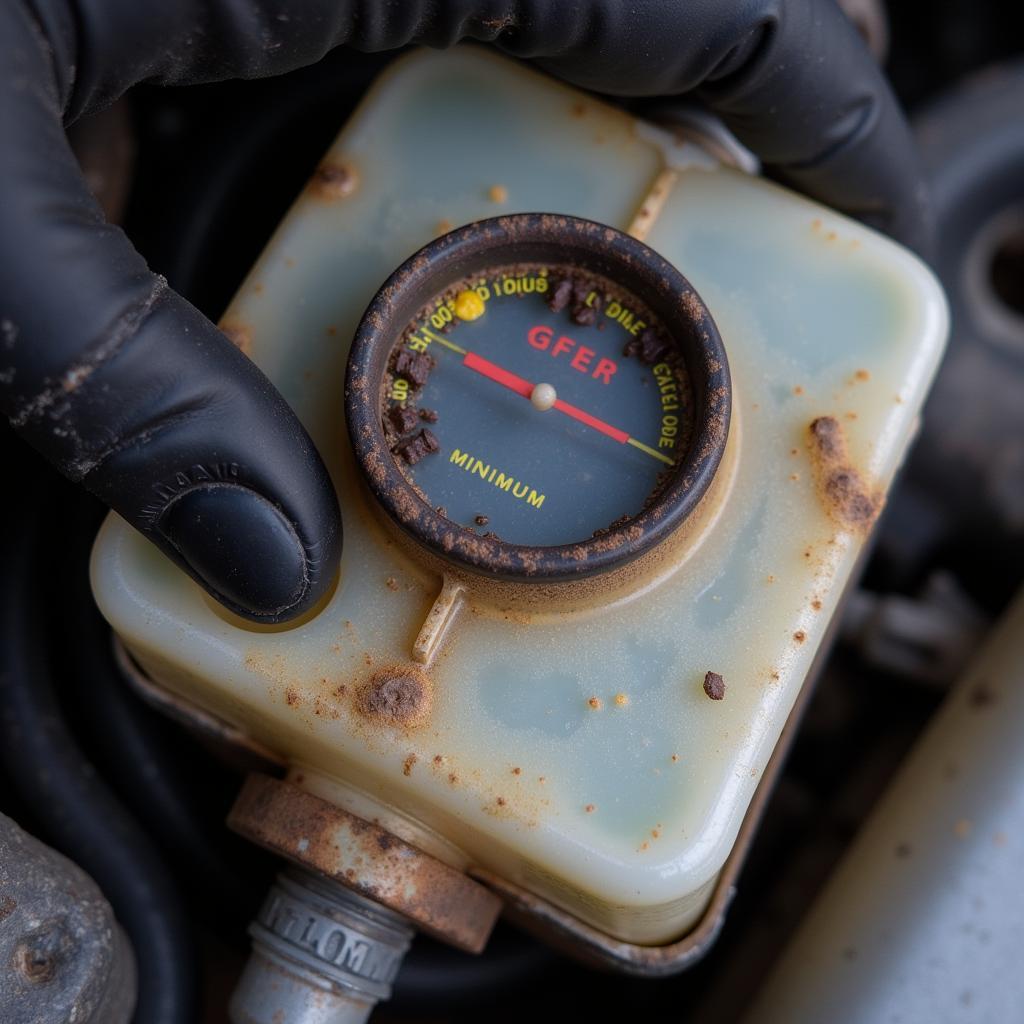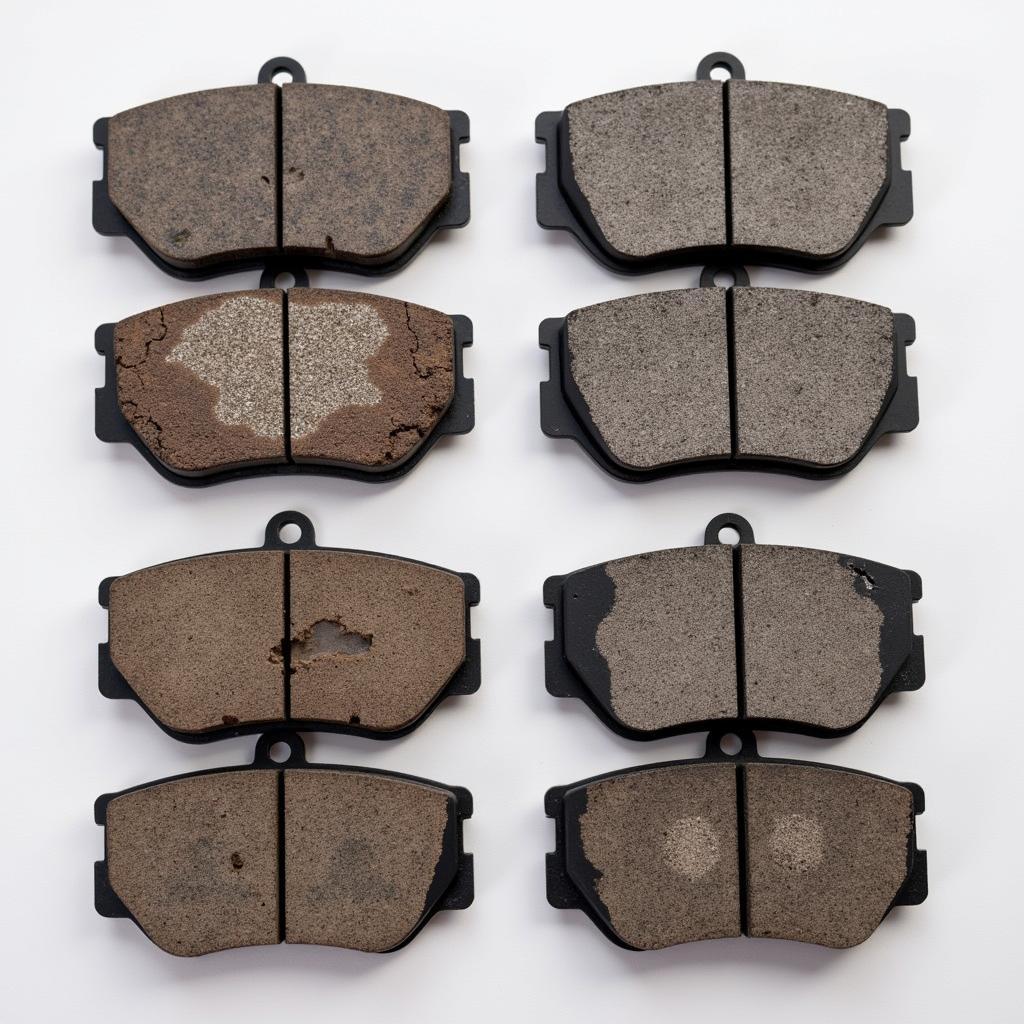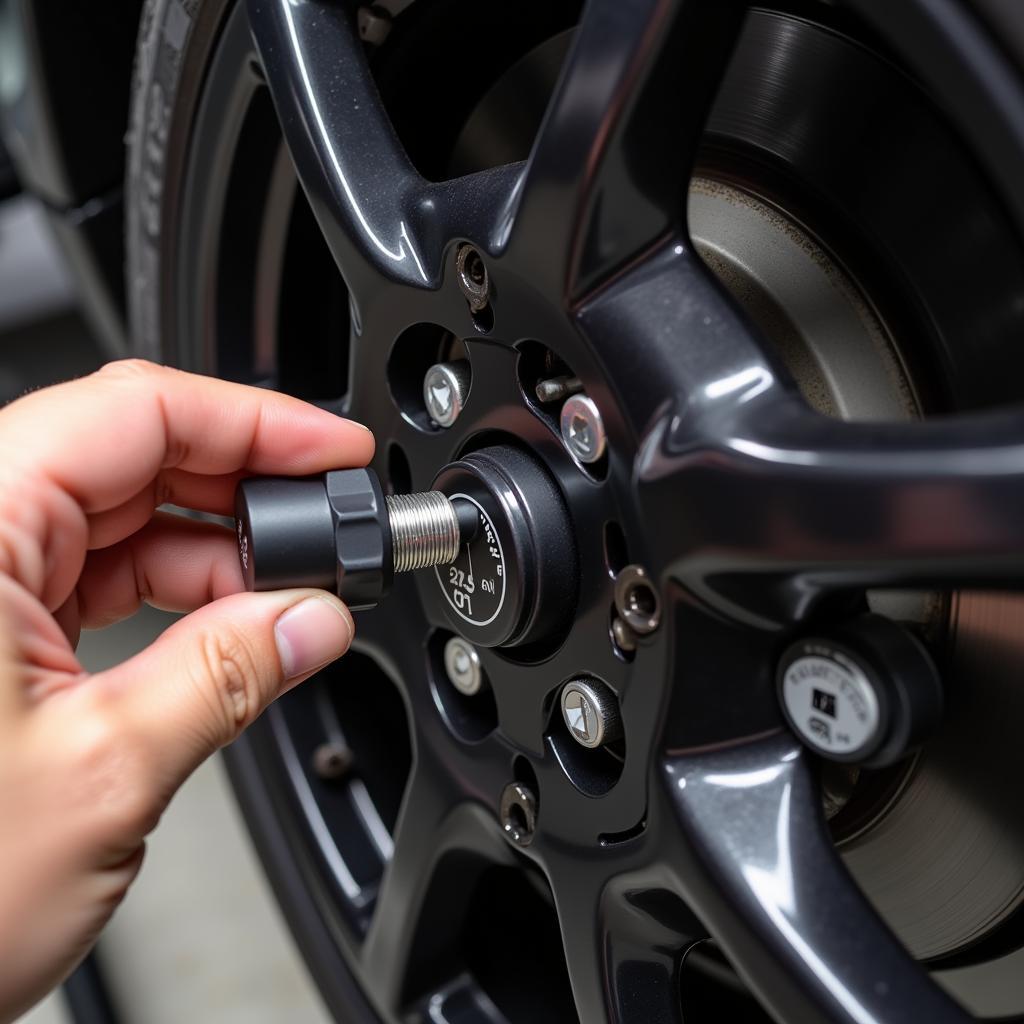The red brake warning light on your dashboard is a critical safety feature. When it illuminates, it signals a potential problem with your vehicle’s braking system that requires immediate attention. Ignoring this warning light could lead to reduced braking performance or even brake failure, putting you and others at risk. This article explores the common causes behind the red brake warning light illuminating and what you should do when you see it.
Common Causes of a Red Brake Warning Light
While the red brake warning light itself doesn’t pinpoint the exact issue, it provides a crucial signal that something needs attention. Here are some of the most common reasons why your brake warning light might be on:
1. Low Brake Fluid Level
 Brake Fluid Reservoir Showing Low Level
Brake Fluid Reservoir Showing Low Level
One of the most common culprits is low brake fluid. Brake fluid is essential for transmitting the force from your foot on the brake pedal to the brakes themselves. When the fluid level drops, often due to worn brake pads or a leak in the braking system, the warning light illuminates to alert you.
What to do: If you suspect low brake fluid, check the fluid level in the brake fluid reservoir. If it’s low, add the appropriate brake fluid (as recommended in your owner’s manual) until it reaches the “maximum” line. However, it’s crucial to remember that simply adding brake fluid won’t fix the underlying problem. A mechanic should inspect your braking system for leaks or worn components.
2. Worn Brake Pads
Brake pads are designed to wear down over time. They are a friction material that clamps down on the brake rotor to slow or stop your vehicle. When your brake pads wear thin, the brake caliper pistons have to extend further than usual, leading to a drop in brake fluid level and triggering the warning light.
What to do: If you suspect worn brake pads, you might notice other symptoms such as a squealing or grinding noise when applying the brakes. It’s crucial to have your brake pads inspected and replaced by a qualified mechanic as soon as possible.
 Comparison of Worn Brake Pads and New Brake Pads
Comparison of Worn Brake Pads and New Brake Pads
3. Brake System Leak
A leak in your brake system, whether it’s in the brake lines, hoses, calipers, or wheel cylinders, can cause a significant drop in brake fluid pressure. Even a small leak can compromise your braking ability, making it crucial to address the issue immediately.
What to do: If you notice a puddle of fluid under your vehicle, especially if it’s clear or yellowish and near the wheels, it could indicate a brake fluid leak. Do not attempt to drive the vehicle; call a tow truck and get your car to a mechanic for immediate inspection and repair.
4. Faulty Brake Light Switch
2004 chrysler crossfire brake warning on
While less common, a faulty brake light switch can also trigger the red brake warning light. This switch is responsible for turning on your brake lights when you press the brake pedal. If it malfunctions, it can sometimes cause the warning light to illuminate.
What to do: If your brake lights aren’t working correctly along with the illuminated warning light, it’s worth having your brake light switch checked by a mechanic.
5. ABS (Anti-lock Braking System) Problem
Many modern vehicles come equipped with an Anti-lock Braking System (ABS). The ABS system prevents your wheels from locking up during hard braking, improving steering control. If the ABS system encounters a problem, it can trigger the brake warning light.
What to do: If you suspect an issue with your ABS system, it’s best to get your vehicle diagnosed by a professional mechanic who can read the ABS trouble codes and pinpoint the problem.
What To Do When Your Brake Warning Light Comes On
“A flashing brake warning light is often more urgent than a steady one,” says John Smith, a seasoned automotive engineer with over 20 years of experience. “It usually indicates a more severe issue with your brake system.”
Here’s a step-by-step guide on what to do when your brake warning light comes on:
- Pull over safely. As soon as it’s safe, pull your car over to the side of the road and put it in park.
- Check your owner’s manual. Consult your vehicle’s owner’s manual for specific instructions regarding the brake warning light.
- Inspect the brake fluid level. If it’s safe to do so, carefully check the brake fluid level in the reservoir.
- Call for assistance. If the brake fluid level is low, you notice a leak, or if you experience any braking problems, do not attempt to drive the vehicle. Call a tow truck and get your car to a qualified mechanic immediately.
Additional Causes of Brake Warning Light Illumination
- Faulty Parking Brake Switch: Sometimes, a stuck or malfunctioning parking brake switch can cause the brake warning light to stay on.
- Electrical Problems: In some cases, electrical issues like a short circuit or a blown fuse related to the brake system can trigger the warning light.
- Recent Brake Work: If you’ve recently had work done on your brakes, it’s possible that a component was not installed correctly, leading to the warning light.
Conclusion
The red brake warning light is not something to ignore. It serves as your vehicle’s way of communicating a potential problem with one of its most essential safety systems – your brakes. 2003 e320 red esp brake warning light and alarm Addressing the root cause of the warning light promptly can prevent further damage, costly repairs, and most importantly, help ensure your safety and the safety of others on the road. Remember, when it comes to brakes, it’s always better to err on the side of caution and seek professional help.


